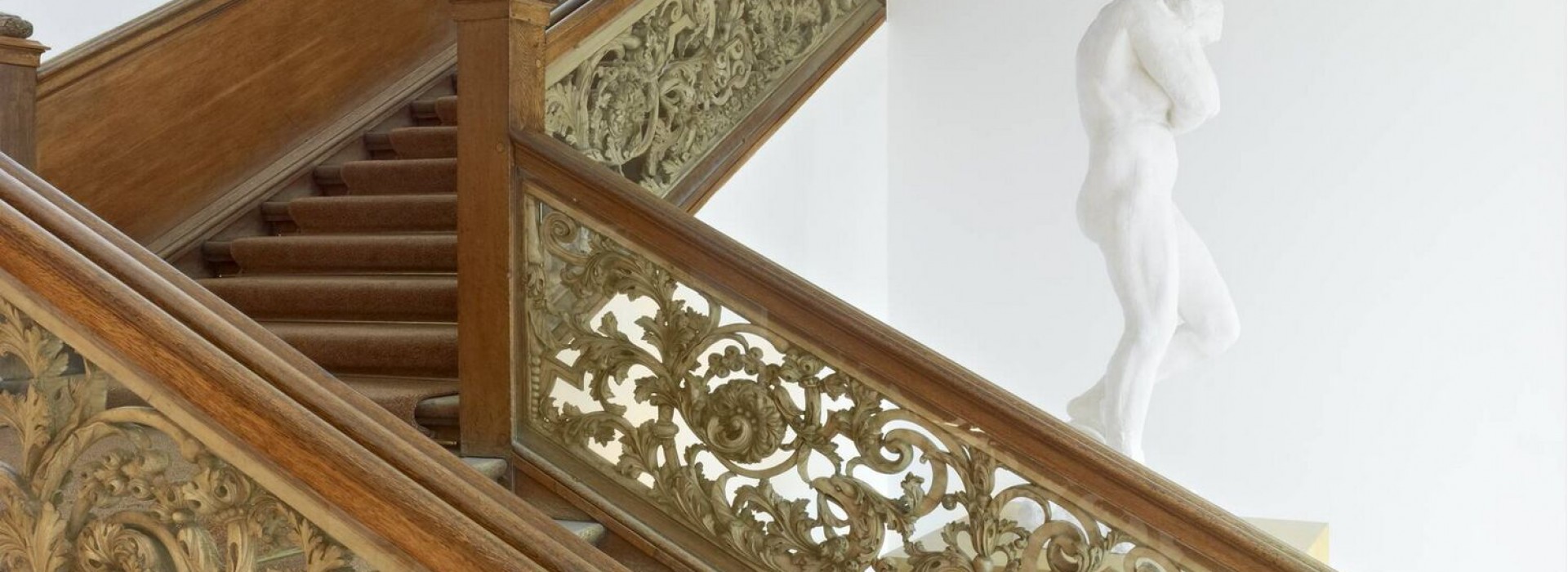Ada de Wit was struck by the beauty of this monumental example of interior art a few years ago when she was a temporary staff member in the museum’s Department of Collections and research.
All that was known about the staircase with its beautiful, exuberant carvings was that it originally came from a building on the Lange Vijverberg in The Hague and that it was given to the museum 1928. The architect Van der Steur even took account of its extraordinary dimensions when designing the museum’s new building.



